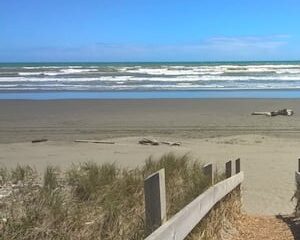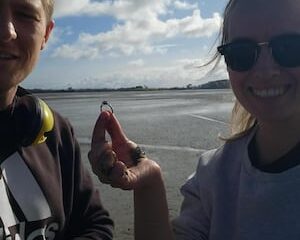Politics
Foreign Tourists to Pay New Fees for Iconic New Zealand Sites
Foreign tourists visiting some of New Zealand’s most renowned Department of Conservation sites will soon incur a fee ranging from $20 to $40. Prime Minister Christopher Luxon revealed the new charge during the National Party conference held in Christchurch on October 15, 2023. Initially, the fee will affect popular destinations such as Cathedral Cove/Te Whanganui-a-Hei, the Tongariro Crossing, the Milford Track, and Aoraki Mt Cook.
The decision aims to address the significant number of foreign visitors to these sites, who, according to Conservation Minister Tama Potaka, represent approximately 80 percent of all visitors. Luxon stated, “Tourists make a massive contribution to our economy, and no one wants that to change. But I have heard many times from friends visiting from overseas their shock that they can visit some of the most beautiful places in the world for free.”
He emphasized the need for foreign visitors to contribute financially to the preservation and maintenance of these special locations. The introduction of fees aligns with a broader strategy to ensure that New Zealand’s natural assets are sustainably managed while continuing to attract international tourism.
The fee structure is expected to generate additional revenue that will be reinvested into conservation efforts and infrastructure improvements at these popular destinations. The government aims to implement the new charges in early 2024, although specific dates have yet to be confirmed.
In recent years, New Zealand has experienced a surge in international tourism, particularly in its national parks and scenic areas. As global travel resumes post-pandemic, the influx of tourists has raised concerns about environmental sustainability and the capacity of popular sites to accommodate large crowds.
With this new initiative, the government hopes to strike a balance between welcoming international tourists and protecting the natural beauty that makes New Zealand a prime destination. As the tourism sector continues to recover, the introduction of the visitor fee may serve as a model for other countries facing similar challenges in managing their natural resources while catering to an increasing number of visitors.
Overall, this move reflects a growing recognition of the need to ensure that tourism remains sustainable and beneficial for both visitors and local communities.
-

 Sports5 days ago
Sports5 days agoRichie Mo’unga’s All Blacks Return Faces Eligibility Hurdles
-

 World2 days ago
World2 days agoFatal ATV Crash Claims Life on Foxton Beach
-

 Sports1 week ago
Sports1 week agoSouth Africa Elects to Bowl First in Tri-Series Final Against NZ
-

 World3 days ago
World3 days agoPolice Arrest Multiple Individuals During Funeral for Zain Taikato-Fox
-

 Politics3 weeks ago
Politics3 weeks agoDavid Seymour Proposes Fast-Track Law for New Supermarkets in NZ
-

 Entertainment3 weeks ago
Entertainment3 weeks agoGeorge Calombaris Opens Up About Alcohol Struggles After Scandals
-

 World3 weeks ago
World3 weeks agoDaughter Accused of Murdering Mother in Khandallah Home
-

 Top Stories3 weeks ago
Top Stories3 weeks agoTragic Crash Claims Three Lives on Masters Rd Near Waiuku
-

 World3 weeks ago
World3 weeks agoDriver High on Magic Mushrooms Crashes with Child in Car
-

 World3 weeks ago
World3 weeks agoCoalition Leaders Address UN Rapporteur’s Criticism, Clarify Response
-

 Business2 days ago
Business2 days agoAir New Zealand Defends Airpoints Scheme Against Australian Critique
-

 Health3 weeks ago
Health3 weeks agoWoman’s Missing Engagement Ring Found in Waiuku Mudflats




















